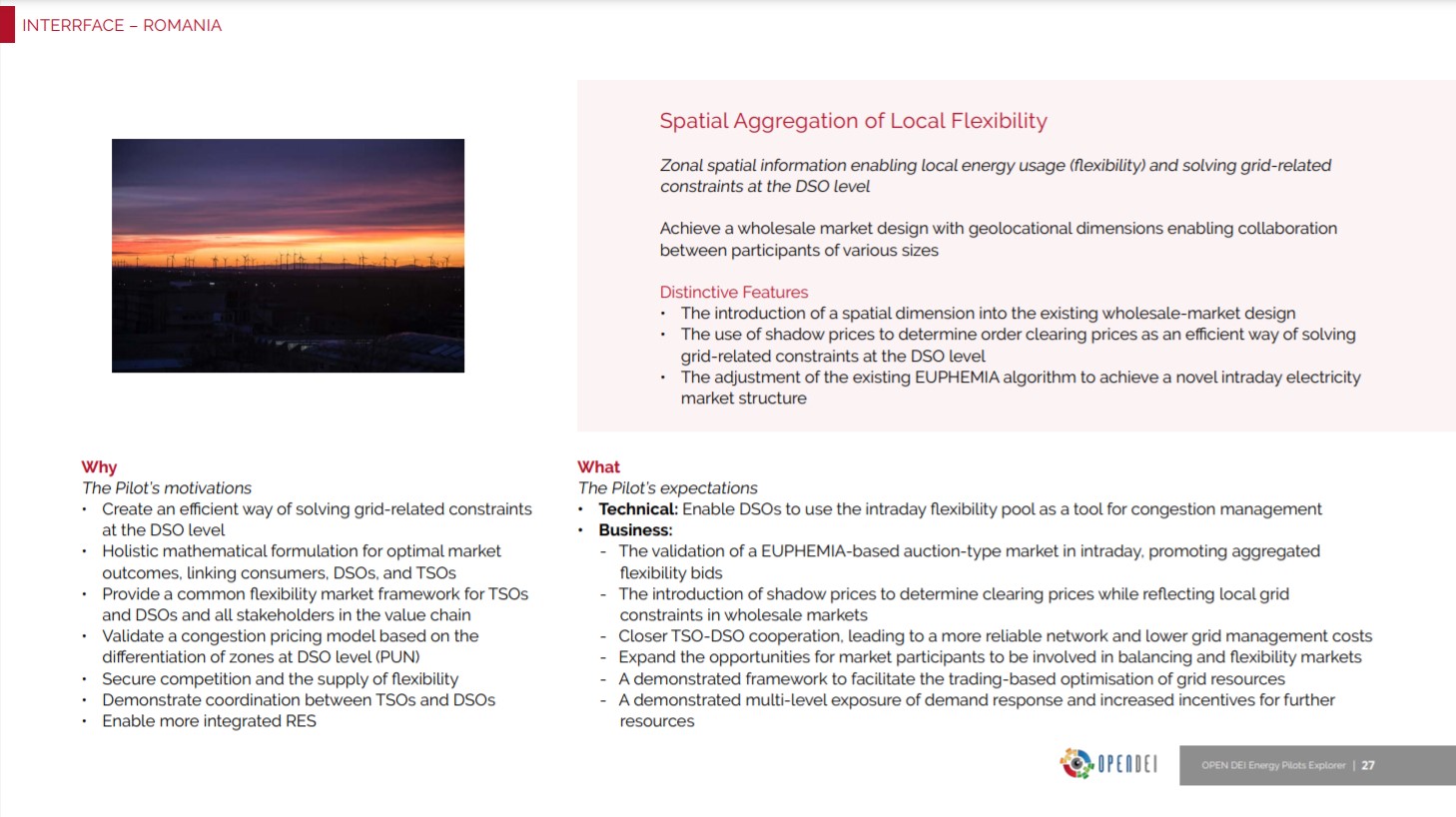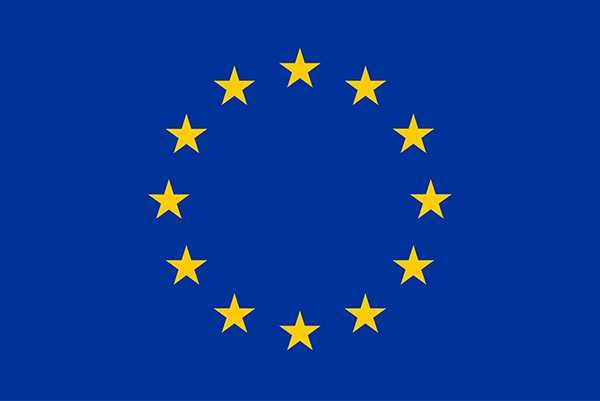Location: Romania
Description: EC’s Clean Energy Package aims to incentivize the participation of the distributed energy resources in the wholesale market by changing its regulation. Aggregators are the key to fully utilize this potential, but the aggregation itself is hindered presently, as the current market structure cannot represent the local network constraints. This is the case in the Romanian market as well, where the power market is evolved throughout the last decades on the premises of aiming towards an unconstrained “copper-plate” wholesale energy trading. This resulting uniform wholesale pricing approach did not lead to the desired outcome, as the socialization of the network constraints through system usage tariffs led to inefficient price incentives.
However, if the locational information from the distributed sources providing energy and/or new types of flexibility bids can be channeled into the market optimization algorithm, this new aspect can only provide more welfare outcome of trading platforms. This spatial dimension can be introduced into the current wholesale market design, by the extension of EUPHEMIA’s PUN-like pricing scheme, Introducing a special type of demand bid to be cleared based on average of multiple zonal prices.
Within this task spatial dimensions will be introduced into existing wholesale market design. The holistic mathematical formulation for optimal market outcomes and optimal use of local flexibilities. Shadow-prices to determine order clearing prices will be used, as an efficient way of solving grid related constraints regarding flexibility sources on DSO level, and will be demonstrated by simulation. Effects of DSO-usage of such resources on bidding zone market outcomes will be simulated, and relevant subset of different usages will be prototyped. Data used for the demonstration will be provided by affected DSOs and TSOs, while the behaviour of market players is to be examined by the involvement of actual market participants of the demonstration area.
Objectives and expected outcome
- Optimal use of local flexibilities
- Develop a prototype introducing local flexibilities in the TSO-driven wholesale market
- Create an efficient way of solving grid related constraints on DSO level
- Holistic mathematical formulation for optimal market outcomes, linking consumers – DSOs -TSOs



 This project has received funding from the European Union’s Horizon 2020 research and innovation programme under grant agreement No 824330
This project has received funding from the European Union’s Horizon 2020 research and innovation programme under grant agreement No 824330